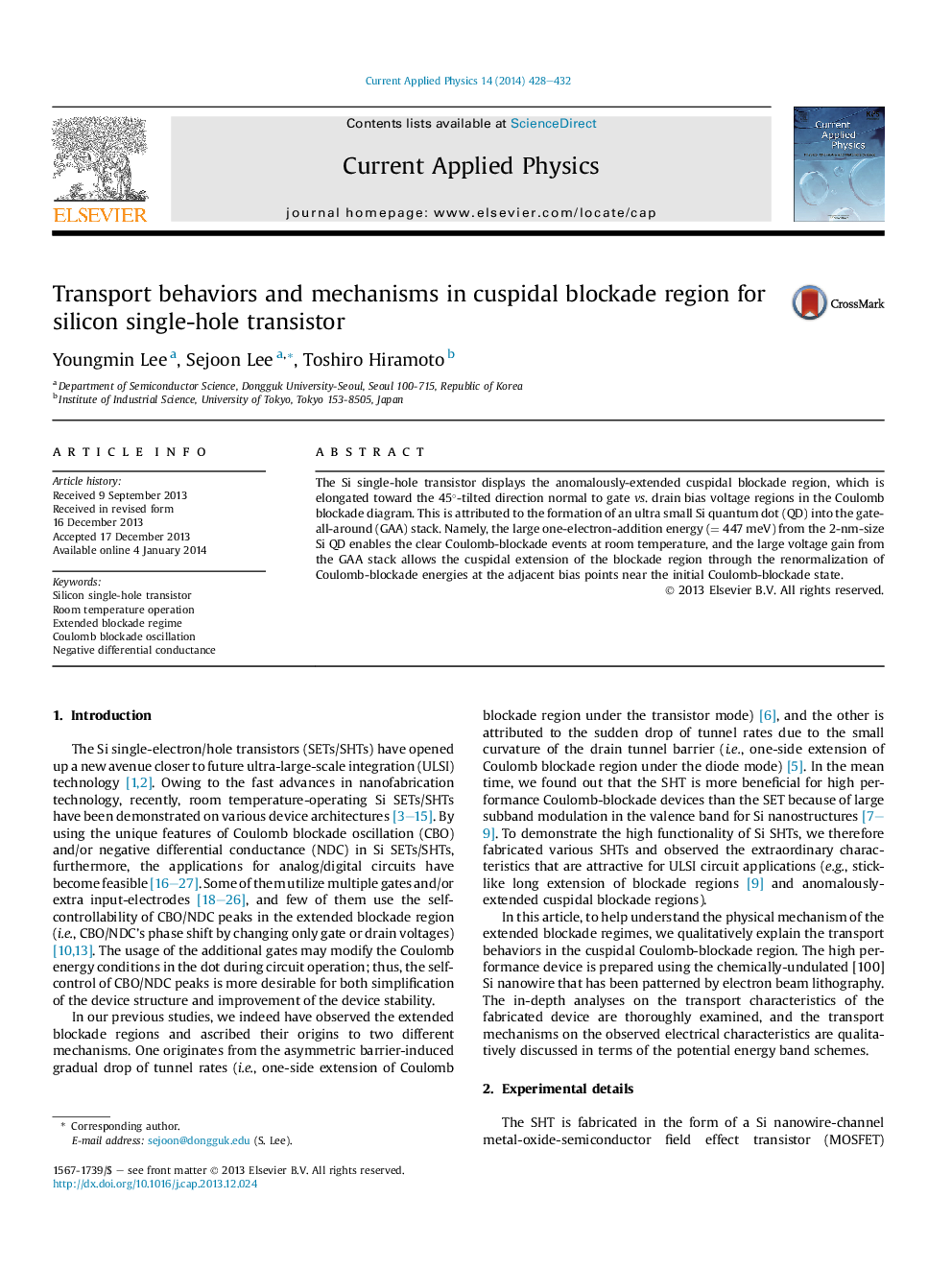| Article ID | Journal | Published Year | Pages | File Type |
|---|---|---|---|---|
| 1786254 | Current Applied Physics | 2014 | 5 Pages |
•The Si single-hole transistor exhibits the cuspidal Coulomb-blockade (CB) regions.•Stepwise shifts of CB oscillation peaks are demonstrated in cuspidal CB regions.•These arise from the formation of an ultra small dot in the gate-all-around stacks.
The Si single-hole transistor displays the anomalously-extended cuspidal blockade region, which is elongated toward the 45°-tilted direction normal to gate vs. drain bias voltage regions in the Coulomb blockade diagram. This is attributed to the formation of an ultra small Si quantum dot (QD) into the gate-all-around (GAA) stack. Namely, the large one-electron-addition energy (= 447 meV) from the 2-nm-size Si QD enables the clear Coulomb-blockade events at room temperature, and the large voltage gain from the GAA stack allows the cuspidal extension of the blockade region through the renormalization of Coulomb-blockade energies at the adjacent bias points near the initial Coulomb-blockade state.
